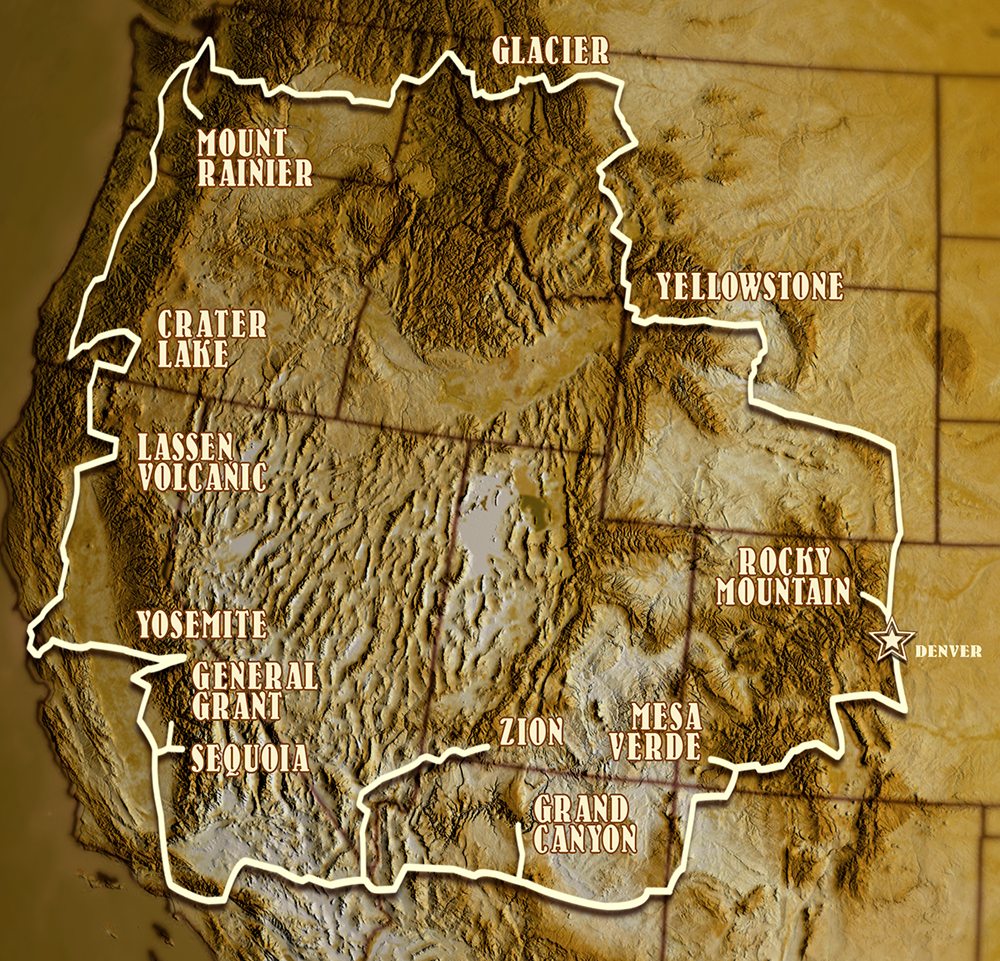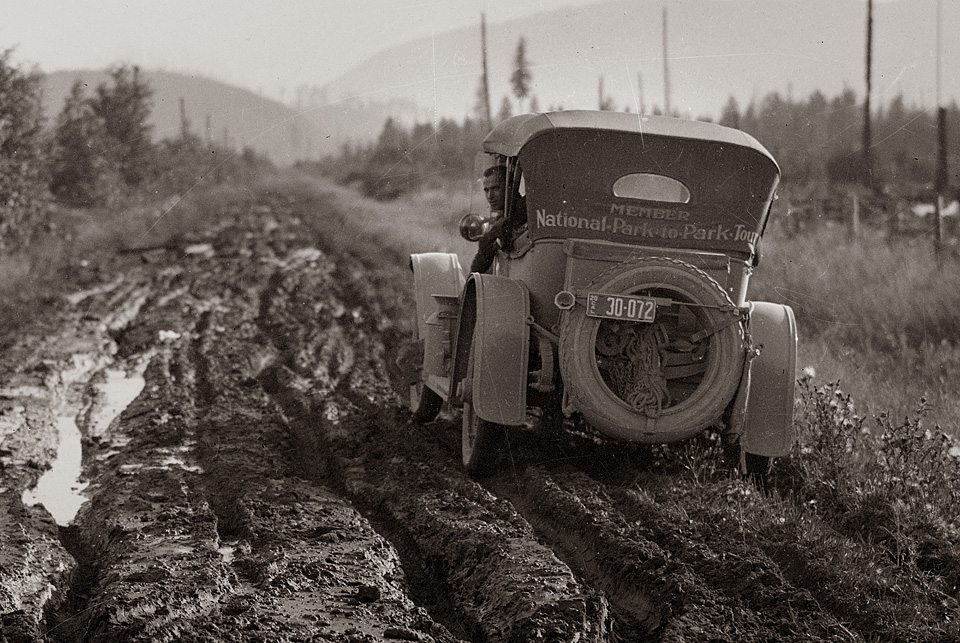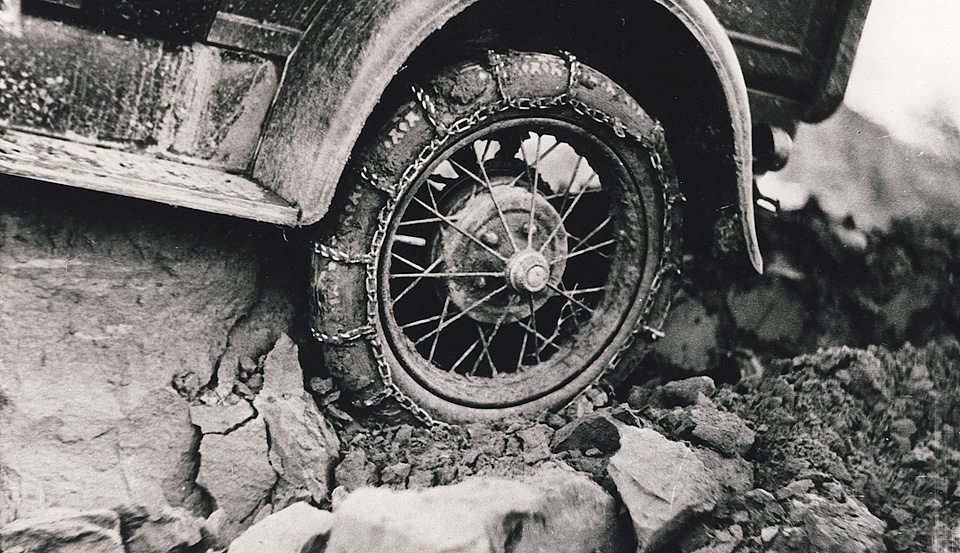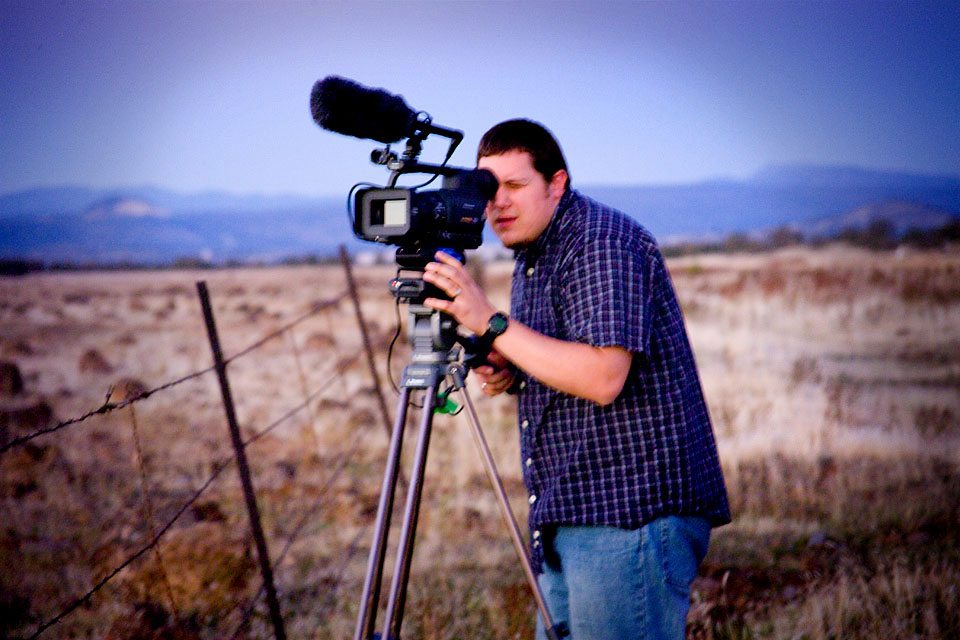
Film Synopsis:
On the clear, cloudless morning of August 26th, 1920, in the city of Denver, Colorado, twelve American motorists set out on a 5,000 mile, 76-day pilgrimage to all twelve National Parks. This Park-to-Park Highway was the longest motor route to date—and its roads were not even paved.
PAVING THE WAY: The National Park-to-Park Highway begins with a brief history of the automobile, from its status as a rich man’s toy to its remarkable affordability with the invention of Henry Ford’s assembly line. Once the average American is able to travel, civic movements such as “See America First” begin to promote tourism within the National Parks, shifting from the railroad to the automobile. The decimation of World War I and the flu pandemic of 1918 hindered this movement, but by 1920, the American public was ready to get out and explore the West.
However, roads for automobiles were crude at best. There were no reliable maps, gas stations, or convenience stores. Accommodations were few, far between, and expensive. Because of this, the newly established National Park Service decided to promote both tourism to the National Parks and the good roads to get there with the National Park-to-Park Highway.
Two characters played major roles in organizing the inaugural tour of this highway. Stephen Mather, the director of the National Park Service, was the major advocate for the highway linking the National Parks. However, Anton Westgard, a pathfinder for AAA, was the one who mapped the route through the parks and led the motorists on the tour. One provided the idea, the other provided the manpower.
From Denver to Rocky Mountain National Park, Yellowstone, Glacier, Mt. Rainier, Crater Lake, Lassen Volcanic, Yosemite, General Grant, Sequoia, Zion, the Grand Canyon, Mesa Verde and back to Denver, the original twelve travelers of the Park-to-Park Highway in 1920 faced a truly adventurous frontier. Dirt roads often became muddy, and the weather was dangerously unpredictable. Even Westgard, exhausted from his efforts to secure safe passage for the tour, became seriously ill during the trip. Yet hundreds of other travelers joined them, sharing in the experience. By the time they returned to Denver, the idea of a road trip to the National Parks was firm within the American imagination.

The Inaugural Tour
The inaugural tour of the National Park-to-Park Highway set off from Denver on its epic drive on August 26th, 1920. Each motorist had to be experienced and hardy enough to complete seventy-six days of driving and public speaking over the course of five thousand miles. The participants included members of Good Roads Clubs, National Park representatives, and people just looking for a good time. In that sense, the tour was a unification of causes and interests, as well as a sign of the rising popularity of automobile tourism.
The idea for the National Park-to-Park Highway came from a discussion between Gus Holm’s and Stephen T. Mather at the dedication ceremony for Rocky Mountain National Park. Both men were at the tour’s beginning in Denver, though Mather himself only traveled with the tour in Oregon and to Mesa Verde. Leading the tour was AAA’s field representative, Anton L. Westgard, who had already driven the route as he was planning and mapping it.
The tour followed a set schedule, averaging a distance of sixty-five miles in a day. Each town they visited provided a chance for the leading tour members to give speeches on the importance of supporting roads to the National Parks. Municipal promotion and maintenance of roads would mean tourism traffic with new money and settlers for the towns near major highways.
After journeying north and west through Rocky Mountain, Yellowstone, and Glacier National Parks, Westgard fell ill and left the touring party in Spokane. Holm’s took over Westgard’s duties and continued to lead the caravan south through Mount Rainier, Crater Lake, Yosemite, General Grant (now King’s Canyon), and Sequoia. Lassen Volcanic Park had no roads in 1920, so the tour had to bypass it.
In Sequoia National Park, the tour began to face winter weather. They had no trouble with this further south, past Zion and the Grand Canyon, but once they headed north to Colorado, snow became a problem. Many tour members continued to Denver by train, but the remaining seven members stuck it out to see Mesa Verde and enter Denver in their travel-seasoned automobiles.
The tour officially ended with the first National Park-to-Park Highway Convention in Denver. The National Park-to-Park Highway Association authored maps, pamphlets, and provided roadside assistance for motorists for the next six years. In 1926, the Association disbanded as federal- and state-funded road-building took over.

Early Automobile Travel
Before the 1900s, any long distance travel across the United States was accomplished in one of three ways. First, there was travel by boat, which depended entirely on river routes and coastlines. Then there was travel by horse or wagon, which was slow and hindered when it came to impassable mountains and rivers too deep to ford. Lastly, there were trains, much faster than horses and able to handle rough terrain once engineers and workmen laid the tracks. But the problem with trains was their expense and restriction to timetables.
The turn of the century brought a new invention into the hands of Americans. At first considered an amusing toy with only about 8,000 of them in the US, the automobile would develop into the dominant form of American transportation. When Horatio Nelson Jackson, after countless breakdowns, succeeded as the first person to cross the North American continent in 1903 with an automobile, it did more than signal the rise of the “horseless carriage.” The event indicated a growing need for automobiles that were durable enough to survive long distance travel.
Larger gas tanks, cargo space, and more durable tires and other car parts were all useful adaptations, but adapting the automobile was only half the battle. First, the automobile had to be affordable. Cars were a rich man’s novelty until Henry Ford’s assembly line cut production costs and released the 1908 Model T onto the market. Automobile ownership skyrocketed, but then there was the problem of road conditions. Before 1920, most roads were dirt, hard-packed and rutted. Cars got stuck in the mud so often that local farmers could make a significant amount of money using their horses to haul them out. Dust was also a constant problem, so much so that drivers wore dusters and goggles. Gravel and macadam (oil and crushed rock) roads were improvements, but governments willing to spend the money could produce concrete and asphalt roads.
Aside from the roads themselves, many other aspects of travel were only just being developed by the time the 1920 National Park-to-Park Highway automobile tour occurred. There were few, if any gas stations, convenience stores, and mechanics. Long-distance highways needed to be planned, signposted, and mapped. Good roads movements and automobile clubs including Automobile Club of Southern California and AAA worked to improve travel for motorists. Their work included building the Lincoln Highway, the Yellowstone Highway, and the National Old Trails Road. The federal government also had a hand in funding roads, and their efforts culminated in the Federal-Aid Highway Act of 1956, which established the Interstate Highway System.

A Word From Director Brandon Wade
A VISIONARY REFLECTION
There is nothing more soothing and healing then a long drive.
I grew up in the middle of the country, where the Mighty Mississippi and Interstate 80 meet. I grew up with the forever current of highway travel like a mountain stream outside my bedroom window. If you hadn’t grown accustomed to this constant stream, you would hear the sounds of 18-wheelers and passers-by. The soul of travel was in my blood.
My father grew up traveling back and forth from the Midwest and West Coast while his nomad parents grew through (or dodged) life. My dad figured that his folks had lived in 40 different places by the time his parents celebrated their 40th anniversary. Traveling and motion is in my blood.
My parents took my sister and I on a summer vacation almost every year to either central Colorado or a coast. It was such a wonderful time of family bonding. My life chapters are marked by which trip I had taken that year.
Travel, to me, is a source of reflection, and a time to set goals for the upcoming journey ahead – what I call a visionary reflection. I lived in Denver for a handful of years, and traveled back to the Midwest almost every three months. While taking that long 12-hour drive, mostly solo, I had the freeing opportunity to be me.
I like the idea of musically scoring my travels as if I were the subject of a film on my own life. I have posed as a 12-hour disc-jockey, shuffling CDs while on the road, feeding one after another. Some are my favorite tracks that I couldn’t travel without; some are new. I get to experience them, attaching emotional associations to each song while taking in the landscape around me. I have been known to jump station to station for the whole trip, or only listen to the AM band for a whole trek. When I am most comfortable with myself, I’m able to not distract myself with music at all. Then I have time to reflect, listen, just be.
When I picked up the book “The Playground Trail”, by Lee and Jane Whiteley, at the Rocky Mountain National Park gift shop while on my honeymoon, I was fascinated with the idea of taking this mega-road trip. I loved the use of archival photos from the inaugural tour, and that this book was designed as a travel guide, to aid me in taking the trip myself. I contacted Lee and Jane, months later, met them over a pancake breakfast and got their blessing to produce a film on this topic, using their material as a resource.
What must it have been like to travel this “route” in 1920? What were cars like then? What was Western travel like then? There weren’t gas stations around. Cars didn’t even have CD players! They really must have suffered while taking this trip, right?
I was enamored with the idea of taking this trip, following the proverbial tread marks of these “auto-pioneers”; learning along the way about the story, the people, the land, my crew and (selfishly) myself.
My first feature-length film, LET IT SHINE, was a story about a place filled with opportunities for self-discovery. A place that let people mess up, and be honest with themselves and others. I believe that a road trip provides people with some of the same opportunities. On the road, you are always moving, always evolving, not tied down to one idea, one perspective, or one choice.
My hope is that by watching this film you continue to find joy in learning from your history, that you are encouraged to take the long way around, and that you learn to give yourself a safe place for self-discovery.
Brandon Wade
St. Louis, Missouri
